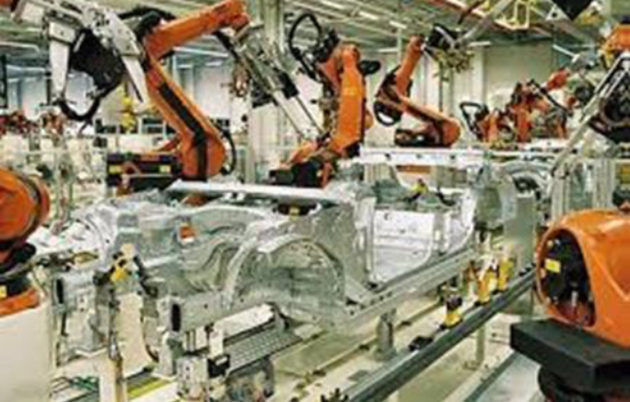The onset of the virus pandemic has led to a new clarion call in India – make the country self-reliant. Yes, it can be done but there has to be a proper approach, writes P. V. Balasubramaniam, Former Director and CEO, York Transport Equipment (Asia) Pte. Ltd., Singapore

Prime Minister Narendra Modi’s call for a self-reliant India has led to discussions on foreign direct investments (FDIs) for production of goods and reduction of Chinese imports, which currently tote up to USD 75 billion. FDIs are necessary for economic growth and employment and this is an opportune time. The focus is on electronics as it constitutes the largest segment of import. There are definite proposals for mobile phone assembly with the government offering over USD 5 billion production-linked incentives. Obviously, FDIs for mobiles or laptops or electric vehicles (EVs) cannot make us truly self-reliant.
But the true knowhow resides in the components and these will continue to be imported. As American business investor and industrial engineer Tim Cook recently said, iPhones are made in China mainly because there are 2 million application developers for iOS and they use advanced manufacturing systems and robotics to maintain precision and zero-defect quality across phones running into hundreds of millions. These advanced technology adoptions and capability of manpower have made China the preferred choice. The question is: how could China achieve this?
In January 2006, China initiated a 15-year medium to long-term plan (MLP) for the development of science and technology. The MLP called for China to become an innovation-oriented society by 2020, a world leader in science and technology and for developing capabilities for indigenous innovation. It called for research and development expenditure to be increased to 2.5% of the GDP and technology import to be restricted to a maximum of 30%. Prior to 2006, though a manufacturing hub, it relied on foreign technology, as India now does. UNESCO Science 2030 states in its report of 2016 that China was on its way to achieve all their goals of MLP, specifically on raising contribution of technological advances to economic growth to more than 60% by 2020.

This was possible in China due to clear policies, incentives, action plans and targets for provinces and state enterprises. PM Modi said for that for India to achieve self-reliance we need to adopt a formula of 5 Is – intent, inclusion, infrastructure, investment and innovation. For us to be truly self-reliant, intent and innovation are key factors. The future is being driven by Gen 4 industries such as artificial intelligence (AI), robotics, new energy, advanced manufacturing, new materials and biotechnology. India missed Industry 3.0 consisting of computers, electronics and automation, preferring import over developing knowhow to manufacture indigenously.
For us to leapfrog into Industry 4.0 it would need a lot of intent and innovation. Industries must have the intent to support and encourage a local supply chain towards developing world-class technology and products at global prices and invest in technology and move towards smart manufacturing. The Global Innovation Index 2019 places India at 52 and China at 12. India Innovation Index 2019, developed by Niti Aayog, scores India at 15.6 on a scale of 100. It indicates that dramatic improvement is needed in all areas!

The research and development spend by India has stagnated at 0.7% of the GDP for over a decade while China spends over 2%. Of this, 60% is spent by central government institutions and public sector units (PSUs). And of the 40% spent by the private sector, a majority comes from multinational enterprises (MNEs) having their own research and development setups in India. There is little that the Indian private sector spends on research and development. Encouragingly, over 1,200 MNE research and development setups operate in India with export revenue of about USD 30 billion, employing over 1 million engineers. India develops products for the global market, but we do not see them. In fact, of the 3,498 patents per year awarded by US’ patent office to Indian inventors, about 2,761 are credited to MNEs, 407 to Indian corporates and 180 to Indian academia.
China ranks second in US patents, fourth in published papers in international journals and second in citation. Surely, Indian industries could also develop cutting-edge technology products by investing on research and development and human talent. We must be more creative to design and develop our own products for the export market rather than engage in manufacturing based on drawings. In fact, research and development is necessary to boost exports. The following could help towards innovation and to be truly self-reliant.
- Department of Science and Technology must announce a new policy; the last was in 2013. What needs to be defined is priority areas, funding and incentives, a plan for the how and when of achieving milestones, stakeholders’ responsibilities and clear action plans. The Department of Science and Technology’s policy document must be the country’s manifesto!
- Premier science and technology institutions in the country do cutting-edge basic science research. The government should incentivize companies and institutions to collaborate for applied research and development in priority areas. Through this, institutions will understand the research needs of the industry and work on projects that could lead to commercial value. A target must be set to achieve 2% of GDP for research and development by 2025. CSR funding to science and technology institutions for research and development would also be useful.
- Many Indians work on frontiers of new technologies in US’ universities and the Silicon Valley. Some may be encouraged to return permanently or for a 5-10 years’ tenure to set up and lead research labs as done by both Singapore and China, or collaborate with labs like MIT and Stanford in some of the areas.
- Start-ups could lead the way for development of Gen 4 industries with supportive policy from the government and a robust ecosystem.
- Dashboard is a must to track our progress on innovation, research and development outcome on collaborative work between industry and universities, international patents obtained and technology development and adoption.
- The recent National Employability Report 2019 indicates that less than 4% of graduate engineers have the technical, cognitive and language skills for technology start-up software engineering jobs and only 3% have new-age skills in the areas of AI, machine learning, data science and mobile development. Urgent steps need to be taken by universities and colleges to address this lacuna.
- India can be truly self-reliant only through building on its technology foundation.